Dead Sea disappearing day by day
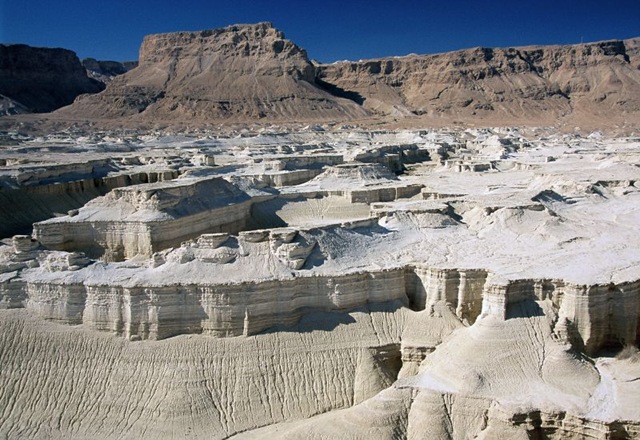
The Dead Sea has been drying up at a dramatic rate in recent decades as a result mostly of human demands for water. But instead of letting the historic body of water continue to disappear, some scientists are getting increasingly serious about trying to save it.
In the most ambitious and detailed proposal yet, officials are considering a massive engineering project that would pump water into the Dead Sea from the Red Sea more than 110 miles to the south. Water pipes would follow the border between Israel and Jordan, earning the project a conciliatory nickname, "The Peace Conduit," for its potential to ease tensions between two extremely thirsty nations.
An international consortium of researchers has been weighing environmental and financial impacts of the multi-billion-dollar plan for a recent series of reports to the World Bank. As the conversation continues, its consequences stretch beyond the Middle East.
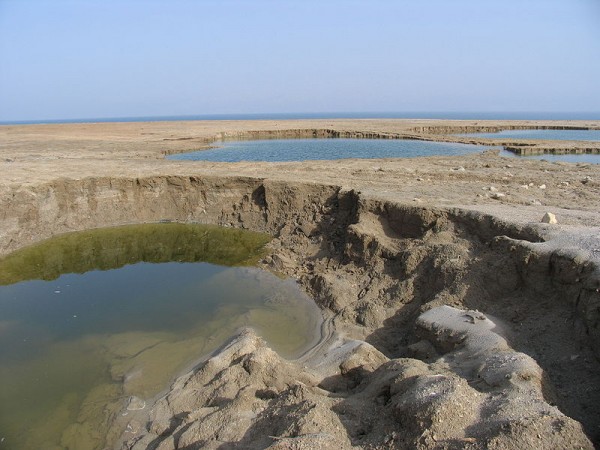
Water woes plague regions around the world. And water-related infrastructure projects span the globe, from the massive Three Gorges Dam in China, to a multitude of dams and irrigation diversions along the Colorado River. In the Middle East, water is really short. Jordan, Israel and the Palestinians desperately need water. At more than 1,300 feet below sea level, the Dead Sea's shores are the lowest spots of dry land on Earth. Hot, dry and surrounded by dramatic rock structures, the area attracts visitors for its Biblical history, stunning archeological sites, and extremely buoyant waters. Some ascribe healing powers to the muddy shores and mineral-rich salts.
The Dead Sea has also proven attractive to the potash industry. Two major companies, Dead Sea Works, Ltd., on the Israeli side and the Arab Potash Company on the Jordanian side, intentionally evaporate water from the Sea to extract millions of tons of mineral-filled salts for use as fertilizer and for other industrial applications.
Pressure on the Dead Sea also comes from two nations full of thirsty people, who remove large amounts of water from the Jordan River and other inflows to use for drinking and agriculture.
For thousands of years, the surface of Dead Sea fluctuated around a generally stable level of about 400 meters (1,300 feet) below sea level. By 1950, though, human activities had started to make an impact. Then, the water level began to drop at a rate of 30 centimeters (about a foot) each year.
Since 2000, that rate has accelerated to about a meter (more than three feet) a year. Overall, the level of the Dead Sea has dropped by more than 30 meters (nearly 100 feet) since the early 1930s. Meanwhile, the region gets just 75 millimeters (three inches) of rain each year. That essentially means that the only way to replace the water that people take from the Dead Sea would be to manually put water back in.
It's far from clear what the perfect solution will be for saving the Dead Sea, or whether there is a good solution at all. Doing nothing has already had profound impacts. As the sea shrinks, underground layers of salt have dissolved, leading to the sudden formation of sinkholes, which damage roads and bridges and threaten lives. More than 2,500 sinkholes now line the shores of the Dead Sea. Most have appeared since 2000.
Scientists are also concerned about losing recently discovered and yet-to-be discovered microorganisms with unique metabolisms and unexplored genetics. Microscopic residents of such a specialized and sensitive ecosystem could harbor insights that might lead researchers to new ways of helping crops grow better in stressful situations. That could eventually help improve food security for the millions of people that live in dry and salty places around the world.
While the idea for pumping water into the Dead Sea is not new, the discussion has taken on a new urgency recently as global water shortages rapidly become crises. And while it's a discussion worth having conversations will need to dig more deeply to truly solve any of the world's water issues. (DiscoveryNews)
The Dead Sea also called the Salt Sea, is a salt lake bordering Jordan to the east and Israel and the West Bank to the west. Its surface and shores are 423 metres (1,388 ft) below sea level, the lowest elevation on the Earth's surface on dry land. The Dead Sea is 377 m (1,237 ft) deep, the deepest hypersaline lake in the world. With 33.7% salinity, it is also one of the world's saltiest bodies of water, though Lake Assal (Djibouti), Garabogazköl and some hypersaline lakes of the McMurdo Dry Valleys in Antarctica (such as Don Juan Pond) have reported higher salinities.
It is 8.6 times saltier than the ocean. This salinity makes for a harsh environment in which animals cannot flourish, hence its name. The Dead Sea is 67 kilometres (42 mi) long and 18 kilometres (11 mi) wide at its widest point. It lies in the Jordan Rift Valley, and its main tributary is the Jordan River.
The Dead Sea has attracted visitors from around the Mediterranean basin for thousands of years. Biblically, it was a place of refuge for King David. It was one of the world's first health resorts (for Herod the Great), and it has been the supplier of a wide variety of products, from balms for Egyptian mummification to potash for fertilizers. People also use the salt and the minerals from the Dead Sea to create cosmetics and herbal sachets. In 2009, 1.2 million foreign tourists visited on the Israeli side.
The sea has a density of 1.24 kg/L, making swimming difficult but providing a relaxing floating experience.
The Dead Sea is an endorheic lake located in the Jordan Rift Valley, a geographic feature formed by the Dead Sea Transform (DST). This left lateral-moving transform fault lies along the tectonic plate boundary between the African Plate and the Arabian Plate. It runs between the East Anatolian Fault zone inTurkey and the northern end of the Red Sea Rift offshore of the southern tip of Sinai.
The Jordan River is the only major water source flowing into the Dead Sea, although there are small perennial springs under and around the Dead Sea, creating pools and quicksand pits along the edges. There are no outlet streams.
Rainfall is scarcely 100 mm (4 in) per year in the northern part of the Dead Sea and barely 50 mm (2 in) in the southern part. The Dead Sea zone's aridity is due to the rainshadow effect of the Judean Hills. The highlands east of the Dead Sea receive more rainfall than the Dead Sea itself.
To the west of the Dead Sea, the Judean Hills rise less steeply and are much lower than the mountains to the east. Along the southwestern side of the lake is a 210 m (700 ft) tall halite formation called "Mount Sodom".
There are two contending hypotheses about the origin of the low elevation of the Dead Sea. The older hypothesis is that it lies in a true rift zone, an extension of the Red Sea Rift, or even of the Great Rift Valley of eastern Africa. A more recent hypothesis is that the Dead Sea basin is a consequence of a "step-over" discontinuity along the Dead Sea Transform, creating an extension of the crust with consequent subsidence.
Around three million years ago, what is now the valley of the Jordan River, Dead Sea, and Wadi Arabah was repeatedly inundated by waters from the Mediterranean Sea. The waters formed in a narrow, crooked bay which was connected to the sea through what is now the Jezreel Valley. The floods of the valley came and went depending on long scale climate change. The lake that occupied the Dead Sea Rift, named "Lake Sodom", deposited beds of salt that eventually became 3 km (2 mi) thick.
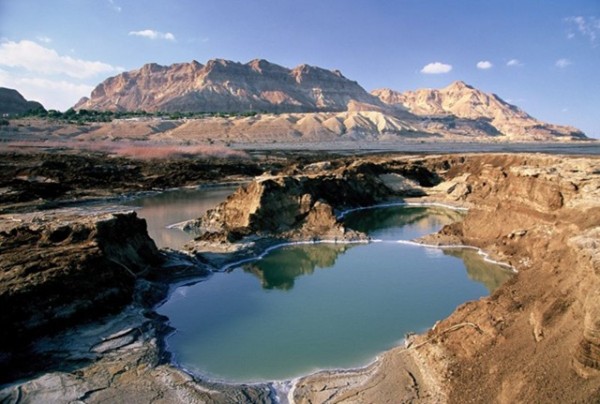
Approximately two million years ago, the land between the Rift Valley and the Mediterranean Sea rose to such an extent that the ocean could no longer flood the area. Thus, the long bay became a lake.
The first such prehistoric lake is named "Lake Gomorrah." Lake Gomorrah was a freshwater or brackish lake that extended at least 80 km (50 mi) south of the current southern end of the Dead Sea and 100 km (60 mi) north, well above the present Hula Depression. As the climate became more arid, Lake Gomorrah shrank and became saltier. The large, saltwater predecessor of the Dead Sea is called "Lake Lisan."
In prehistoric times, great amounts of sediment collected on the floor of Lake Gomorrah. The sediment was heavier than the salt deposits and squeezed the salt deposits upwards into what are now the Lisan Peninsula and Mount Sodom (on the southwest side of the lake).
Geologists explain the effect in terms of a bucket of mud into which a large flat stone is placed, forcing the mud to creep up the sides of the pail. When the floor of the Dead Sea dropped further due to tectonic forces, the salt mounts of Lisan and Mount Sodom stayed in place as high cliffs.
From 70,000 to 12,000 years ago, the lake level was 100 m (330 ft) to 250 m (820 ft) higher than its current level. This lake, called "Lake Lisan", fluctuated dramatically, rising to its highest level around 26,000 years ago, indicating a very wet climate in the Near East. Around 10,000 years ago , the lake level dropped dramatically, probably to levels even lower than today. During the last several thousand years, the lake has fluctuated approximately 400 m (1,300 ft), with some significant drops and rises. Current theories as to the cause of this dramatic drop in levels rule out volcanic activity; therefore, it may have been a seismic event.

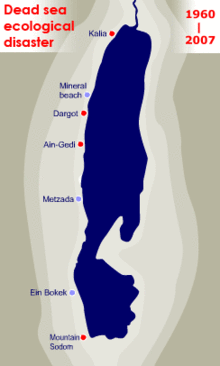
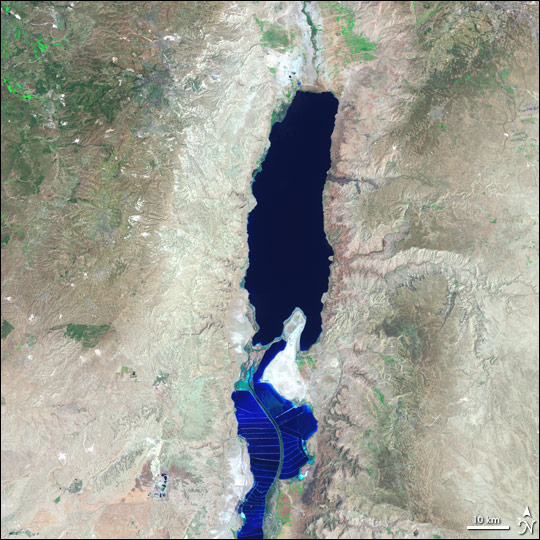
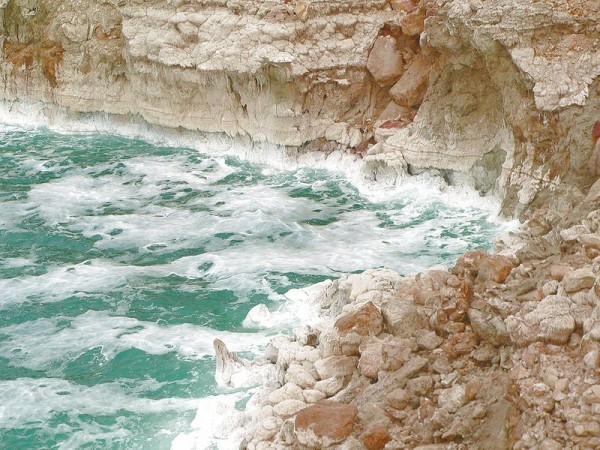
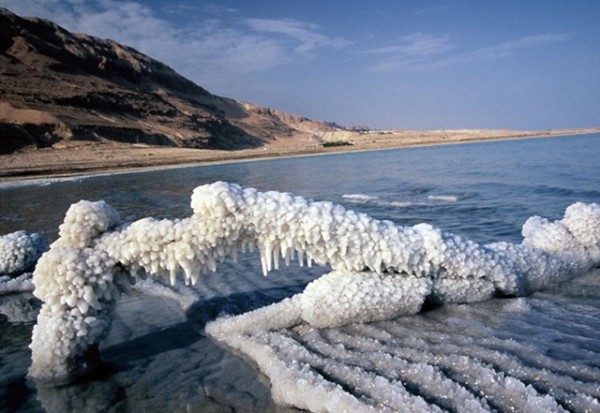
Commenting rules and guidelines
We value the thoughts and opinions of our readers and welcome healthy discussions on our website. In order to maintain a respectful and positive community, we ask that all commenters follow these rules:
We reserve the right to remove any comments that violate these rules. By commenting on our website, you agree to abide by these guidelines. Thank you for helping to create a positive and welcoming environment for all.